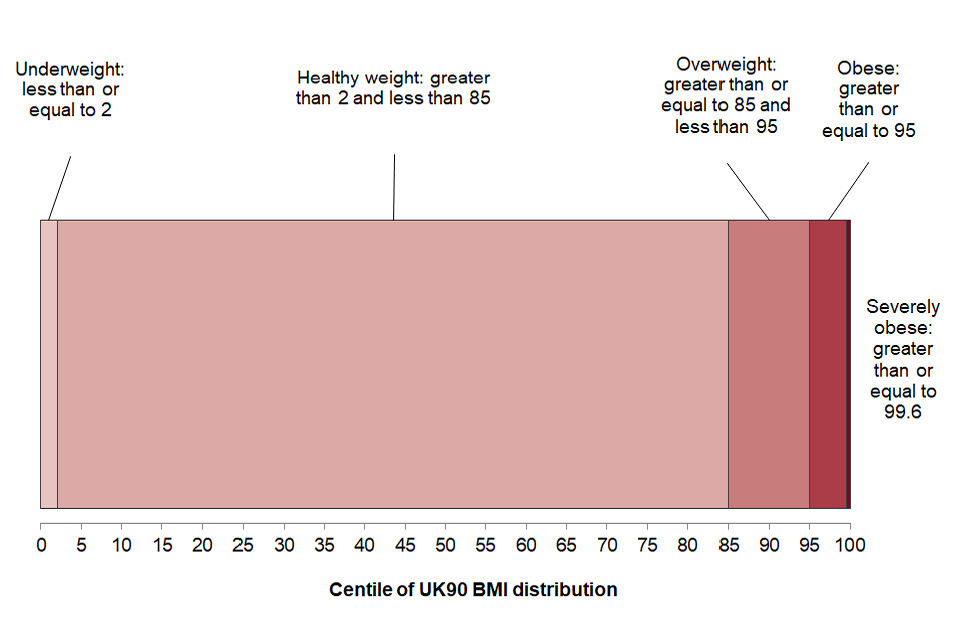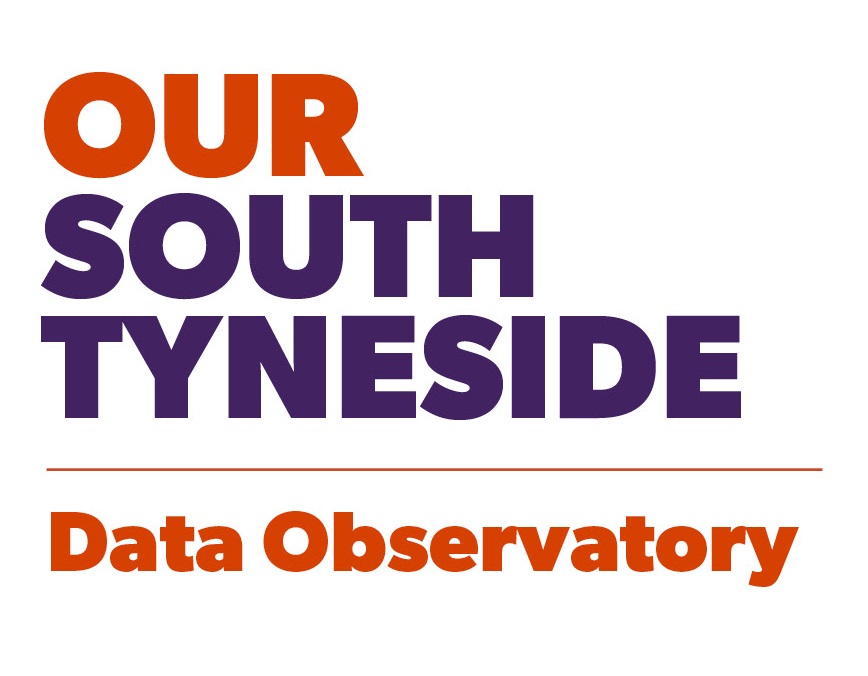This page contains a detailed index of key definitions, as well as relevant sources, covering content included within the Our South Tyneside Snapshot Report 2025.
Good level of development at 2 to 2 and a half years and the end of Reception
Good level of development at 2 to 2 and a half years
In this age group, children who have achieved a good level of development are either at or above the expected level in all five Ages and Stages Questionnaire 3 (ASQ-3) domains.
Good Level of Development at 2 to 2.5 years – Fingertips | Department of Health and Social Care
Measuring child development at age 2 to 2.5 years – GOV.UK
Good level of development at the end of Reception
Children are defined as having a good level of development at the end of the early years foundation stage (EYFS) if they are at the expected level for the 12 early learning goals (ELGs) within the 5 areas of learning relating to: communication and language; personal, social and emotional development; physical development; literacy; and mathematics.
Average Attainment 8 score
Attainment 8 measures the achievement of a pupil across 8 qualifications. These qualifications are:
-
- A double weighted maths element that will contain the point score of the pupil’s English Baccalaureate (EBacc) maths qualification.
- An English element based on the highest point score in a pupil’s EBacc English language or English literature qualification. This will be double weighted provided a pupil has taken both qualifications
- An element which can include the three highest point scores from any of the EBacc qualifications in science subjects, computer science, history, geography, and languages. For more information see the list of qualifications that count in the EBacc. The qualifications can count in any combination and there is no requirement to take qualifications in each of the ‘pillars’ of the EBacc
- The open element contains the three highest point scores in any three other subjects, including English language or literature (if not counted in the English slot), further GCSE qualifications (including EBacc subjects) or any other technical awards from the DfE approved list: http://www.gov.uk/government/collections/performance-tables-technical-and-vocational-qualifications.
Average Attainment 8 Score – Fingertips | Department of Health and Social Care
Persistent absence
A pupil is classed as persistently absent if 10% or more of possible academic sessions are missed, and severely absent if 50% or more of possible sessions are missed.
10% of sessions translates to around 7 days of absence across the term.
Securing good attendance and tackling persistent absence – GOV.UK
Healthy weight, overweight and obesity classifications in children
Healthy weight classification in children
For population monitoring purposes children are classified as healthy weight if their body mass index (BMI) is between the 2nd and less than the 85th centile of the British 1990 growth reference (UK90) according to age and sex.

Year 6 prevalence of healthy weight – Fingertips | Department of Health and Social Care
Overweight and obesity classifications in children
For population monitoring purposes, a child’s body mass index (BMI) is classed as overweight or obese where it is on or above the 85th centile or 95th centile, respectively, based on the British 1990 (UK90) growth reference data.
The population monitoring parameters for overweight and obesity are lower than clinical parameters used to assess individual children – which use the 91st and 98th centiles for overweight and obesity. This is to capture children in the population in the clinical overweight or obesity BMI categories and those who are at high risk of moving into the clinical overweight or clinical obesity categories.
Year 6 prevalence of obesity – Fingertips | Department of Health and Social Care
Physical activity in adults
An adult (19+) is classed as physically active if they declare at least 150 moderate intensity equivalent (MIE) minutes of physical activity per week, in bouts of 10 minutes or more, in the previous 28 days.
Generally, the NHS and the Department for Health and Social Care (DHSC) recommend all adults complete a minimum of either 150 minutes moderate intensity exercise (activity which raises your heart rate and leaves you feeling a little out of breath) or 75 minutes of vigorous intensity exercise (activity done with a large amount of effort, resulting in a substantially higher heart rate and rapid breathing) per week.
Adult physical activity – NHS England Digital
Physical activity guidelines for adults aged 19 to 64 – NHS
Physical activity in adults – Fingertips | Department of Health and Social Care
Common mental health disorders
Common mental health disorders (CMDs) are defined as any type of depression or anxiety.
Estimates used within the Our South Tyneside report are provided by the Department for Health and Social Care (DHSC). This is an estimate of the true prevalence and is also likely an under-estimate: (1) estimates are calculated using CMD prevalence proportions based on individuals living in private households, which excludes those who are homeless and those living in institutional settings (e.g. care homes, prisons) who are likely to have poorer mental health; (2) the method uses the latest Adult Psychiatric Morbidity Survey (APMS), 2014, to calculate reference prevalence proportions which are applied to current local populations. It is likely that prevalence proportions have increased since 2014.
Common mental health disorders – Fingertips | Department of Health and Social Care
Long-term musculoskeletal problems
Estimates for long-term musculoskeletal (MSK) problems (16+) refer to self-declared MSK conditions, most commonly associated with either arthritis or ongoing problem with back or joints.
Fingertips | Department of Health and Social Care
Alcohol-specific hospital admissions
Alcohol-specific admissions refer to admissions to hospital where the primary diagnosis or any of the secondary diagnoses are a wholly attributable alcohol-specific condition.
Alcohol-specific admissions per 100,000 – Fingertips | Department of Health and Social Care
Poverty
Child Poverty
The Child Poverty Action Group (CPAG) states that a child is classed as living in poverty if they live in a household with income below 60% of the national average (median) income.
CPAG uses a relative poverty measure to collect data on levels of child poverty in the UK:
- A relative poverty measure reflects what constitutes a basic standard of living at a given point in time, by tracking how well people are doing financially, compared to other people in their society now.
- A relative income measure is quick to update (and project going forward), and changes over time can be easily interpreted.
- The UK government, the European Union, and many other countries use 60% of median income as their poverty threshold, which means it is to some extent internationally comparable.
- The relative poverty measure has broad based support from a wide range of audiences including academic researchers, local authorities, children’s organisations and frontline services.
- It better reflects the resources available to the government – if median income is growing it is likely that tax revenues are rising.
One drawback to using median income measures is that in short-term recessions poverty generally falls, as median income falls, while expectations of a basic standard of living may not, due to expectations of future economic growth. However, over the medium term this should cancel out, as in the recovery period strong growth in median household income means it effectively catches back up with expectations.
Written evidence from Child Poverty Action Group – UK Parliament
Fuel Poverty
The metric for fuel poverty in England is the Low Income Low Energy Efficiency (LILEE) indicator. The LILEE finds a household to be fuel poor if it meets two key criteria:
- Low energy efficiency – this includes all households with a Fuel Poverty Energy Efficiency Rating (FPEER) of band D or below.
- Low income – this includes all households whose residual household income would be below the official poverty line if they were to spend their modelled energy costs
The LILEE measure is a dual indicator which estimates both:
- The number of households that have both low incomes and low energy efficiency
- The depth of fuel poverty among these fuel poor households. This is measured through a fuel poverty gap which represents the difference between the required fuel costs for each household and the nearest fuel poverty threshold.
Fuel poverty methodology handbook (Low Income Low Energy Efficiency) 2024 – GOV.UK
Unique job advertisements
Lightcast calculates unique job postings (or advertisements) via their method of ‘deduplication’. Deduplication is the process of identifying duplicate job postings to ensure that they are not counted twice, thereby giving a more accurate indication of actual jobs available. This is a two-pronged approach:
- Lightcast’s algorithm first identifies new advertisements within a given source, refraining from collecting advertisements that have previously been aggregated.
- The algorithm then identifies identical listings across online job boards and company websites, using normalised fields such as job title, company, and location to check if these fields have been used in new advertisements found in another source.
This process is checked across 60 days of data to identify duplicates, which are then limited to a single count rather than multiple.
As an example, if South Tyneside Council posted an advertisement for the first time on 1st April, Lightcast considers this the “original posting”. For the next 60 days, any advertisements for this job with identical fields found elsewhere are considered as duplicates. Theoretically, if South Tyneside Council were to post this advertisement every day for a whole year, it would only be counted six times.
Within the report, we have calculated the monthly average of unique postings by aggregating unique advertisement counts for each month over a 12 month period, then dividing by 12 to give an indication of how many unique jobs are available per month.
Productivity (GVA per hour worked)
Labour productivity refers to the economic output of individual workers. The Office for National Statistics’ (ONS) preferred measure of labour productivity is Gross Value Added (GVA) per hour worked. It estimates of the value of goods and services produced per hour worked as an overall measure of labour productivity.
This is more useful than alternative productivity measures such as GVA per job or GVA per worker because it takes account of different employment structures such as variations in rates of part-time working or in average hours per job.
Productivity (GVA per hour worked) Report – North East Evidence Hub
Jobs density
Jobs density is defined as the number of jobs in an area divided by the resident population aged 16-64 in that area.
For example, a job density of 1.0 would mean that there is one job for every resident aged 16-64. The total number of jobs is a workplace-based measure and comprises employee jobs, self-employed, government-supported trainees and HM Forces.
Introduction of the Jobs Density Indicator – 2003 ONS Archive
Regulated Qualifications Framework (RQF)
The Regulated Qualifications Framework (RQF) serves as a single system for cataloguing all qualifications regulated by the Office of Qualifications and Examinations Regulation (Ofqual). The RQF typically includes GCSE, A level, AS level and vocational (work related) qualifications in England and Northern Ireland.
Explaining the RQF – The Ofqual blog
What qualification levels mean: England, Wales and Northern Ireland – GOV.UK
Business size classifications
Nomis uses the Inter-Departmental Business Register (IDBR) to classify businesses by employment size. There are multiple definitions for the size classification of a business or enterprise; the following classifications and accompanying data provided by Nomis was used to produce the Our South Tyneside Report:
- Micro – 0 (where the business owner is the sole proprietor) to 9 employees
- Small – 10 to 49 employees
- Medium – 50 to 249 employees
- Large – 250 or more employees
South Tyneside Labour Market Profile – Nomis

